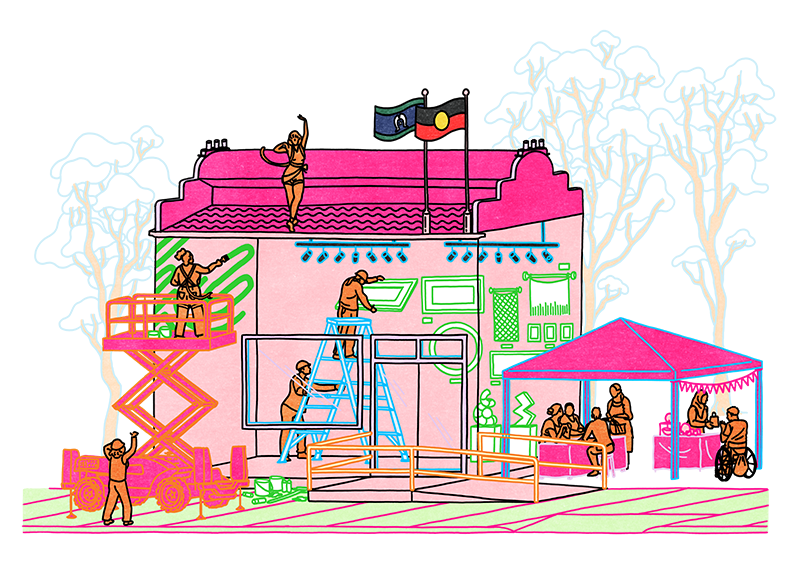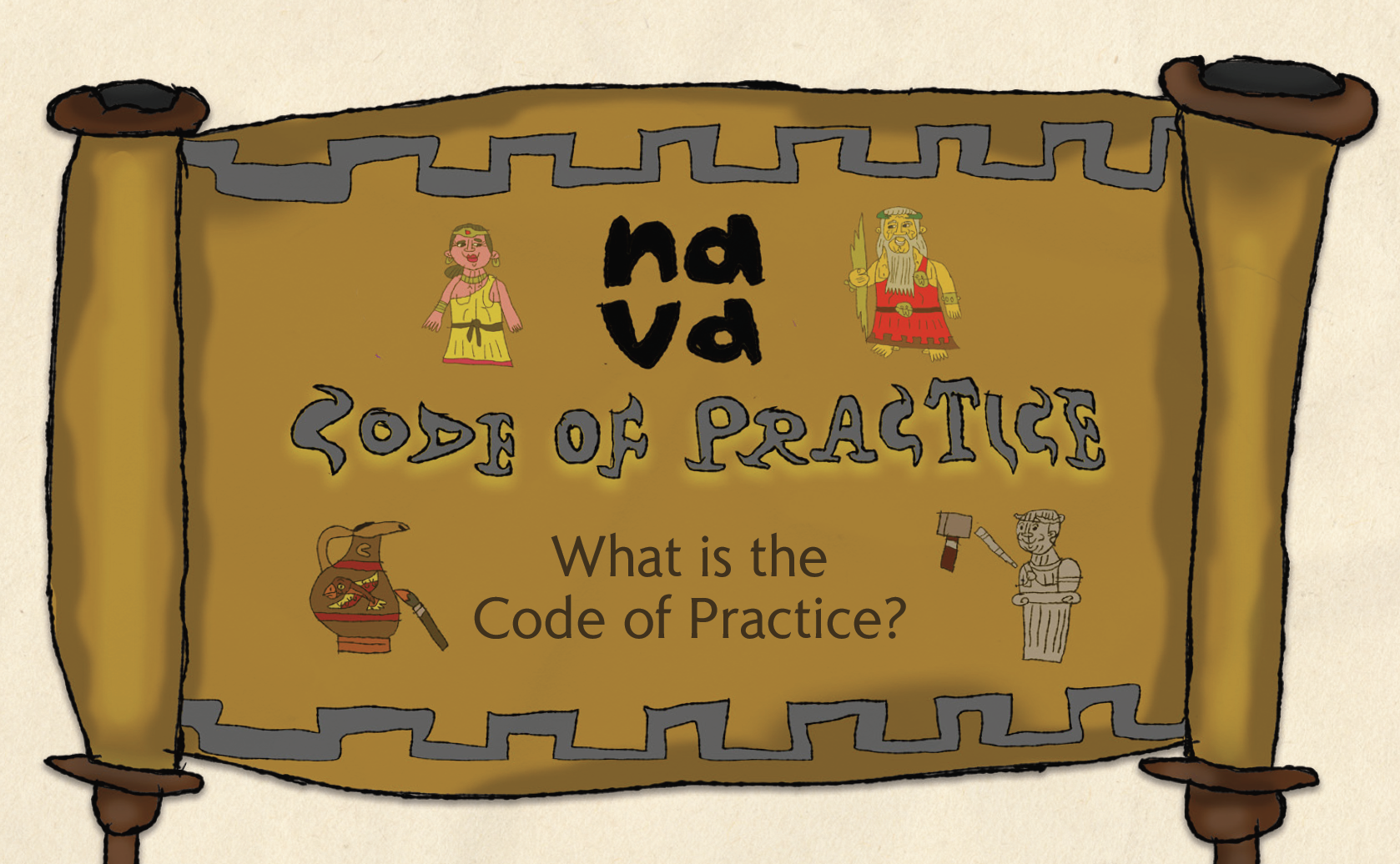Code of Practice for Visual Arts, Craft and Design

About the Code of Practice
Endorsed by the Federal Government in National Cultural Policy 'Revive: a place for every story, a story for every place’, the Code of Practice for Visual Arts, Craft and Design sets out equitable, ethical and self-reflective standards for the professional Australian contemporary arts sector.
The Code covers good practice approaches to working relationships, ethical standards of access and inclusion, and payment rates for artists and arts workers.
The visual arts, craft and design sector is dynamic, diverse and multifaceted, but its lack of regulation and legislation, combined with increasingly precarious conditions makes work and practice unsustainable for many.
The Code serves as a map for ensuring a collaborative, equitable, creative, and inclusive sector for current and future participants. It also doubles as an advocacy tool to support the basis of policy and legislative change for the long-term benefit of the sector.
Some of the good practices in the Code are aspirational ethical standards that the sector has collectively agreed we should work towards. Like many arts organisations NAVA is also working towards good practice in our own strategies, budgets, policies and procedures.
Full Revision
Since its first publication in 2001, the Code has been updated incrementally in response to specific needs and changes. The 2022 revision represents the first full and comprehensive review since 2009. NAVA will maintain the Code as a living document, continuing to adapt and evolve in response to developments in the sector.
The new Code has been restructured, and significantly expanded, with a new section covering Principles, Ethics and Rights reflecting the industry’s growing concern with issues of justice, access, fair work and representation.
Each chapter includes a summary of good practice recommendations, followed by a detailed discussion of responsibilities, recommended processes, case studies and resources.
Methodology
The sixth edition of the Code was developed through extensive consultation across the visual arts, craft and design sector.
In developing the new Code, we collaborated with artists, arts workers, sector networks, advisors, including First Nations legal experts Terri Janke and Company, advocates from our Disability Focus Group, Accessible Arts NSW, Arts Law Centre of Australia and the RMIT School of Art.
For a full list of project collaborators, see Acknowledgements.
We also consulted widely with stakeholder groups through a series of open and closed meetings, online and in person. These national conversations formed the basis of discussion papers which were reviewed by our advisors. The papers were then distributed to the sector, and feedback was collected via open Zoom consultations, online surveys and small closed-group sessions over a two-year period.
Thirty writers, each with lived experience in their subject area, were engaged to develop chapters based on the discussion papers and consultation feedback. Chapter drafts were reviewed by Arts Law, Terri Janke and Company, independent accessibility advisors and segments of the sector before the finalised Code was released.
Scope
The Code sets standards for the conduct of business between art, craft and design practitioners, galleries, agents, dealers, retailers, buyers, sponsors and partners, funding bodies, commissioners, employers and the organisers of residencies, workshops, and prizes.
The principles outlined in the Code are voluntary, not mandatory, except in areas such as intellectual property, workplace health and safety, taxation, superannuation and equal opportunity, which are covered by legislation.
For issues not covered by law, the Code presents a set of good practice standards for the negotiation of contracts, agreements, terms and conditions. It sets out accepted business protocols and ethical expectations in the sector.
The information in the Code is not intended as legal advice. Users are advised to seek independent legal advice in relation to their specific circumstances.
For discussion of terms and language used in the Code, refer to the Glossary. In particular the word ‘artist’ is used throughout the Code to refer to visual artists, craft practitioners, designers and makers.
Using the Code
The Code of Practice can be used by artists, arts workers and organisations as a guideline for good practice standards when navigating professional relationships and making ethical decisions in work and practice.
Organisations may use the Code to:
determine appropriate fees and wages for artists and arts workers
prepare strategy and policy documents
prepare agreements for artists and arts workers
write terms and conditions and processes for opportunities
induct new staff
understand their rights and responsibilities in regard to intellectual property, tax, insurance and access
Those organising an award or prize, residency or workshop may use the Code to gain an understanding of good practices and what they may need to consider.
Artists and arts workers may use the Code to:
compare an agreement or terms and conditions to good practice - negotiate payment rates and working conditions with organisations or other artists and arts workers
guide collaboration with other artists and arts workers - understand their rights and responsibilities in regard to intellectual property, tax, insurance and access
If at any point you need help finding or understanding information in the Code please contact us so we can point you in the right direction.

Accessibility Features
Click the person symbol in the bottom right corner of the website to use a range of accessibility features that adjust the how the website is viewed. This includes adjustments to font size and colours, optimisation for screen readers and other accessibility profiles that can assist with reading.
The Summary of Good Practice Recommendations available in each section gives a simplified overview of a topic to help finding and understanding content.
An Auslan video introducing the Code is available at the top of the Introduction page. More Auslan videos are to come.
In the topic areas of copyright, moral rights, Indigenous and Cultural Intellectual Property there are links to videos created by the Arts Law Centre of Australia with animations to assist with understanding artists’ rights.
NAVA is seeking funding for further accessibility features including Auslan videos for all Good Practice Recommendations, an audio version of the Code, and graphic illustrations on how to use to the Code and Payment Standards.
Feedback
The Code is a collaborative and living document that NAVA will continue to improve and maintain based on changes in the sector and feedback from all who use it. Users are encouraged to provide their experiences with the Code and recommendations for updates through the ‘Feedback’ button found throughout this website.
About NAVA
The National Association for the Visual Arts (NAVA) is a membership organisation which was established in 1983. NAVA brings together the many voices of the contemporary arts sector to improve fundamental conditions of work and practice. We do this through advocacy, education and the Code of Practice.
Visit NAVA's website.